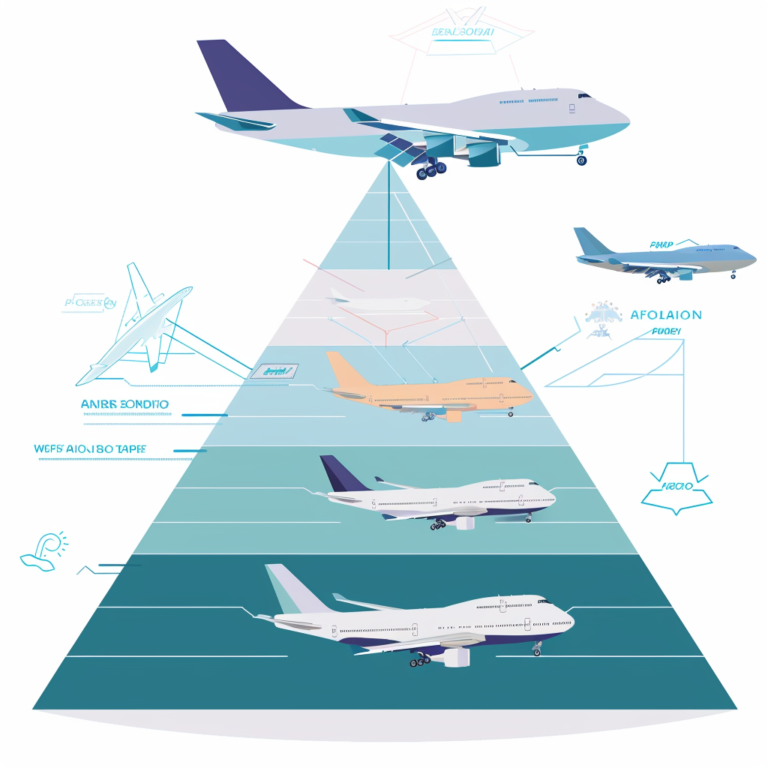What Is the Importance of Freight Documentation
What is freight documentation and why is it crucial?
Freight documentation refers to the collection of essential documents that facilitate the transportation of goods from one location to another. These documents serve multiple purposes, including providing proof of ownership, ensuring compliance with regulations, and facilitating smooth operations throughout the shipping process. The importance of freight documentation cannot be overstated; it acts as the backbone of logistics and supply chain management.
The core entities involved in freight documentation include shippers, carriers, and consignees. Each entity plays a vital role in the documentation process:

- Shippers: Responsible for preparing and providing necessary documents to initiate shipping.
- Carriers: Transport goods and require specific documentation for legal and operational purposes.
- Consignees: Receive goods and need to verify documentation for acceptance.
Effective freight documentation is crucial because it:
- Ensures compliance with local and international regulations.
- Facilitates communication between parties involved in the shipping process.
- Reduces the risk of delays and disputes during transit.
Freight documentation encompasses various types of documents, including bills of lading, commercial invoices, packing lists, and customs declarations. Each document serves a distinct purpose, contributing to the overall efficiency and legality of freight operations.
How does freight documentation ensure regulatory compliance?

Regulatory compliance is a fundamental aspect of freight shipping that ensures adherence to laws governing transportation, safety, and trade. Freight documentation plays a critical role in achieving compliance by providing necessary information to regulatory authorities.
Key aspects of regulatory compliance through freight documentation include:
-
Customs Regulations: Accurate documentation is essential for customs clearance. Documents such as customs declarations provide information about the nature, value, and origin of goods, allowing customs officials to assess duties and taxes.
-
Safety Standards: Certain goods may require specific safety certifications or permits. Documentation ensures that these requirements are met before transportation.
-
Environmental Regulations: Compliance with environmental laws often necessitates proper documentation regarding hazardous materials. This includes Material Safety Data Sheets (MSDS) that outline handling procedures.
The relationship between regulatory bodies and freight documentation can be summarized as follows:
| Regulatory Body | Document Type | Purpose |
|---|---|---|
| Customs Authorities | Customs Declarations | Assess duties/taxes on imported/exported goods |
| Transportation Agencies | Bills of Lading | Verify cargo details for safe transport |
| Environmental Agencies | MSDS | Ensure safe handling of hazardous materials |
Failure to comply with regulatory requirements can result in severe penalties, including fines, shipment delays, or even confiscation of goods. Therefore, maintaining accurate and complete freight documentation is essential for all parties involved in shipping.
What role does documentation play in facilitating smooth cargo movement?
Smooth cargo movement is vital for maintaining efficiency in supply chains. Proper freight documentation streamlines processes by ensuring that all necessary information is readily available to all stakeholders involved in the transportation of goods.
Key roles of freight documentation in facilitating cargo movement include:
-
Streamlining Communication: Clear and accurate documents reduce misunderstandings between shippers, carriers, and consignees. For instance, a well-prepared bill of lading provides essential details about the shipment, reducing the likelihood of disputes over cargo specifications.
-
Expediting Customs Clearance: Accurate paperwork helps expedite customs processes by providing all required information upfront. This minimizes delays at ports or borders due to missing or incorrect documents.
-
Enhancing Tracking Capabilities: Documentation allows for better tracking of shipments throughout their journey. Tracking numbers on bills of lading enable shippers and consignees to monitor cargo status in real-time.
The efficiency gained through proper documentation can significantly impact overall logistics performance. A study found that companies with robust documentation processes experienced a 30% reduction in transit times compared to those with inadequate systems.
How does proper documentation mitigate risks and liabilities in freight shipping?
![]()
Risks and liabilities are inherent in freight shipping due to factors such as theft, damage, or loss during transit. Proper freight documentation serves as a protective measure against these risks by providing evidence that can be used in claims or disputes.
Key ways proper documentation mitigates risks include:
-
Proof of Ownership: Documents like bills of lading establish ownership rights over goods during transit. In cases of theft or loss, these documents serve as evidence for claims against carriers or insurers.
-
Liability Limitations: Many carriers limit their liability based on specific terms outlined in their contracts. Accurate documentation ensures that all parties understand their responsibilities and liabilities, reducing potential disputes.
-
Claims Processing: In the event of damage or loss, having complete documentation simplifies the claims process. It allows shippers to provide necessary evidence quickly to insurers or carriers.
The relationship between risks and proper documentation can be illustrated through this table:
| Risk Type | Documentation Role | Impact on Liability |
|---|---|---|
| Theft | Bill of Lading | Establishes ownership |
| Damage | Inspection Reports | Supports claims against carriers |
| Loss | Shipping Receipts | Facilitates quick claims processing |
By minimizing risks through proper documentation practices, companies can protect their assets while maintaining trust among stakeholders involved in the shipping process.
Why is freight documentation essential for supply chain visibility?
Supply chain visibility refers to the ability to track products throughout their journey from origin to destination. Freight documentation is crucial for achieving this visibility by providing real-time data about shipments.
Essential aspects include:
-
Real-Time Tracking: Documents such as bills of lading contain tracking numbers that allow stakeholders to monitor shipment progress at any stage. This transparency helps prevent delays and enhances customer satisfaction.
-
Data Sharing: Accurate documentation enables seamless data sharing among different parties within the supply chain. This collaboration fosters better decision-making based on current shipment status.
-
Performance Metrics: Documentation provides valuable data that can be analyzed for performance metrics such as delivery times and order accuracy. Companies can use this information to identify areas for improvement within their logistics operations.
The relationship between supply chain visibility and freight documentation can be summarized as follows:
| Visibility Aspect | Documentation Contribution | Benefit |
|---|---|---|
| Tracking | Bills of Lading | Real-time shipment updates |
| Data Sharing | Commercial Invoices | Improved collaboration |
| Performance Analysis | Shipping Reports | Enhanced operational efficiency |
Achieving high levels of supply chain visibility through effective freight documentation ultimately leads to improved service delivery and customer satisfaction.
What are the financial implications of accurate freight documentation?
Accurate freight documentation has significant financial implications for businesses involved in shipping goods. Errors or omissions can lead to costly consequences that affect profitability.
Key financial implications include:

-
Cost Reductions: Accurate documents help avoid delays caused by customs issues or disputes over cargo specifications. This efficiency translates into lower operational costs associated with demurrage fees or expedited shipping charges.
-
Insurance Premiums: Properly documented shipments may result in lower insurance premiums since insurers view well-documented processes as lower risk. Conversely, inadequate paperwork can lead to higher premiums due to perceived risks associated with claims processing.
-
Revenue Protection: Accurate invoices ensure timely payment from customers while minimizing disputes over billing errors. This protects cash flow and maintains healthy revenue streams for businesses involved in freight shipping.
The relationship between financial implications and accurate freight documentation can be illustrated through this table:
| Financial Aspect | Impact | Consequence |
|---|---|---|
| Cost Reductions | Minimizes delays | Lower operational costs |
| Insurance Premiums | Potentially reduced rates | Improved profit margins |
| Revenue Protection | Timely invoicing | Enhanced cash flow |
Investing time and resources into maintaining accurate freight documentation pays off by safeguarding financial interests while ensuring smooth operations throughout the supply chain.
Which key documents are required in freight shipping?
Several key documents are essential for successful freight shipping. Each document serves a unique purpose within the logistics process:
-
Bill of Lading (BOL): Serves as a contract between shipper and carrier; outlines details about the shipment such as type, quantity, destination, etc.
-
Commercial Invoice: A document issued by the seller detailing items sold; used for customs clearance purposes by providing information about value and description of goods.
-
Packing List: Lists all items included in a shipment; aids carriers in verifying contents during loading/unloading processes.
-
Customs Declaration: Required for international shipments; provides customs authorities with information about goods being imported/exported to assess duties/taxes accordingly.
The importance of these documents can be further understood through this table:
| Document Type | Purpose | Key Information Included |
|---|---|---|
| Bill of Lading | Contract between shipper/carrier | Shipment details (type/quantity/destination) |
| Commercial Invoice | Seller’s record | Value/description of goods |
| Packing List | Verification aid | Itemized list of contents |
| Customs Declaration | Compliance with regulations | Information needed for duty assessment |
Understanding these key documents ensures that all parties involved have access to necessary information throughout the shipping process while promoting efficient operations across logistics networks.
How is digital transformation impacting freight documentation?
Digital transformation significantly impacts how businesses manage their freight documentation processes. The shift towards digital solutions enhances efficiency while reducing errors associated with traditional paper-based systems.
Key impacts include:
-
Automation: Digital tools automate document generation processes such as invoices or packing lists; this reduces manual effort while minimizing human error associated with data entry tasks.
-
Real-Time Access: Cloud-based platforms enable stakeholders across supply chains access critical documents anytime/anywhere; this enhances collaboration among shippers/carriers/consignees while improving decision-making capabilities based on current data availability.
-
Enhanced Security: Digital solutions often incorporate advanced security features like encryption/authentication measures; these protect sensitive information contained within documents from unauthorized access or tampering incidents during transit/storage periods.
The relationship between digital transformation impacts on freight documentation can be summarized as follows:
| Impact Type | Benefit | Outcome |
|---|---|---|
| Automation | Reduced manual effort | Increased operational efficiency |
| Real-Time Access | Improved collaboration | Enhanced decision-making capabilities |
| Enhanced Security | Protection against breaches | Safeguarded sensitive information |
Embracing digital transformation not only streamlines processes but also positions businesses favorably within competitive markets where agility/responsiveness are paramount factors driving success today.
This comprehensive exploration underscores how vital accurate/flexible/documented procedures are across various facets related directly/indirectly towards effective management within logistics environments today!





